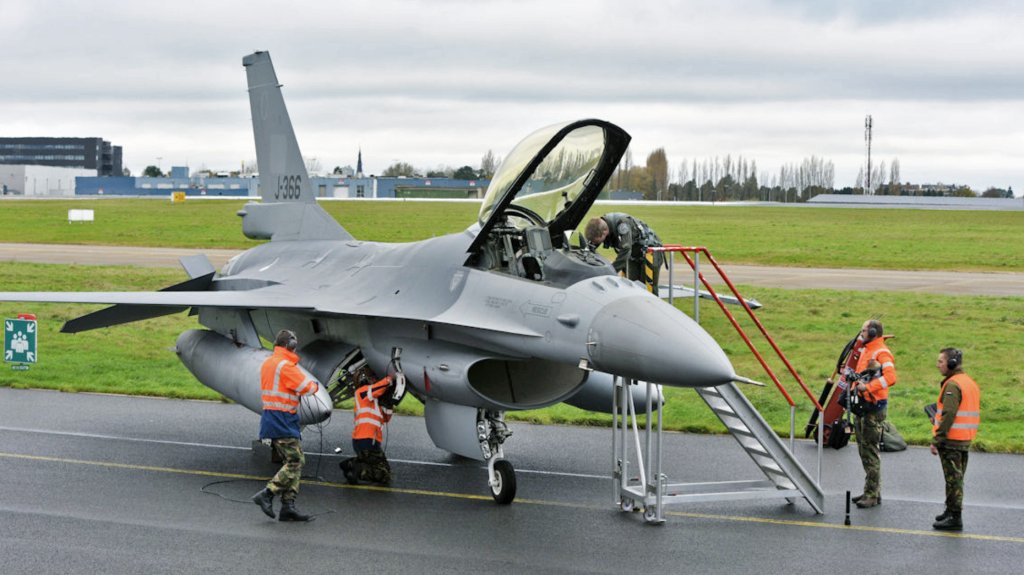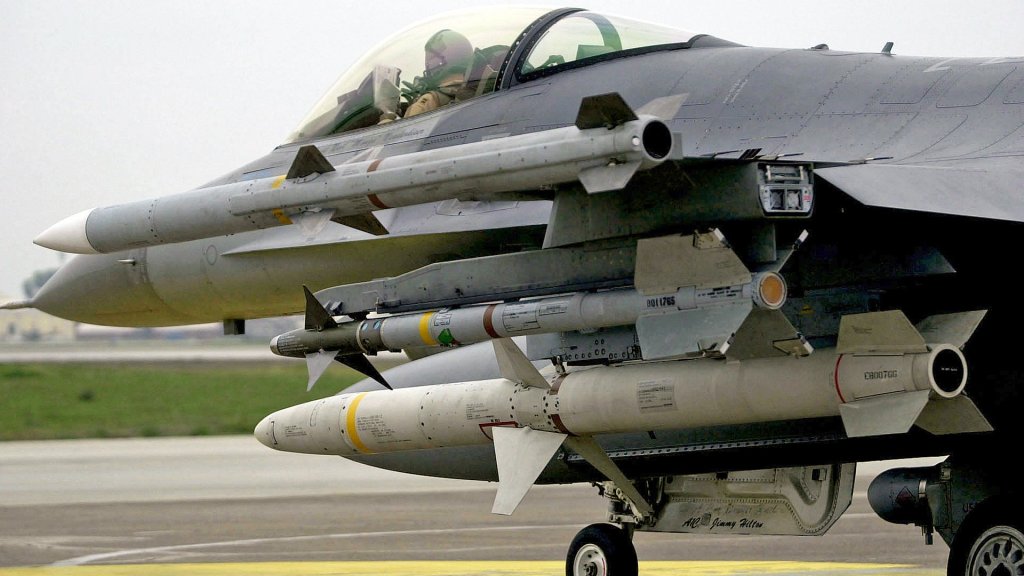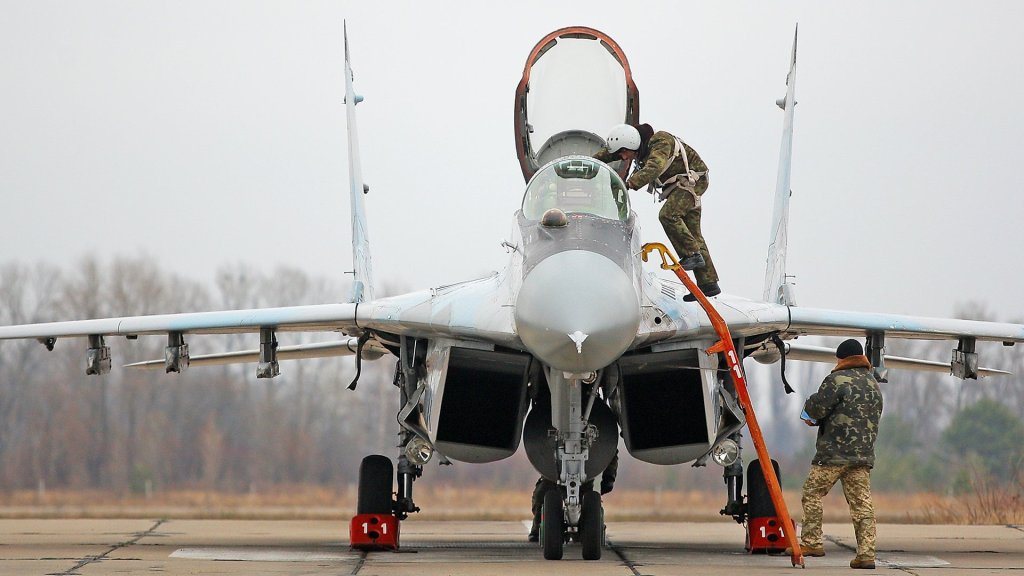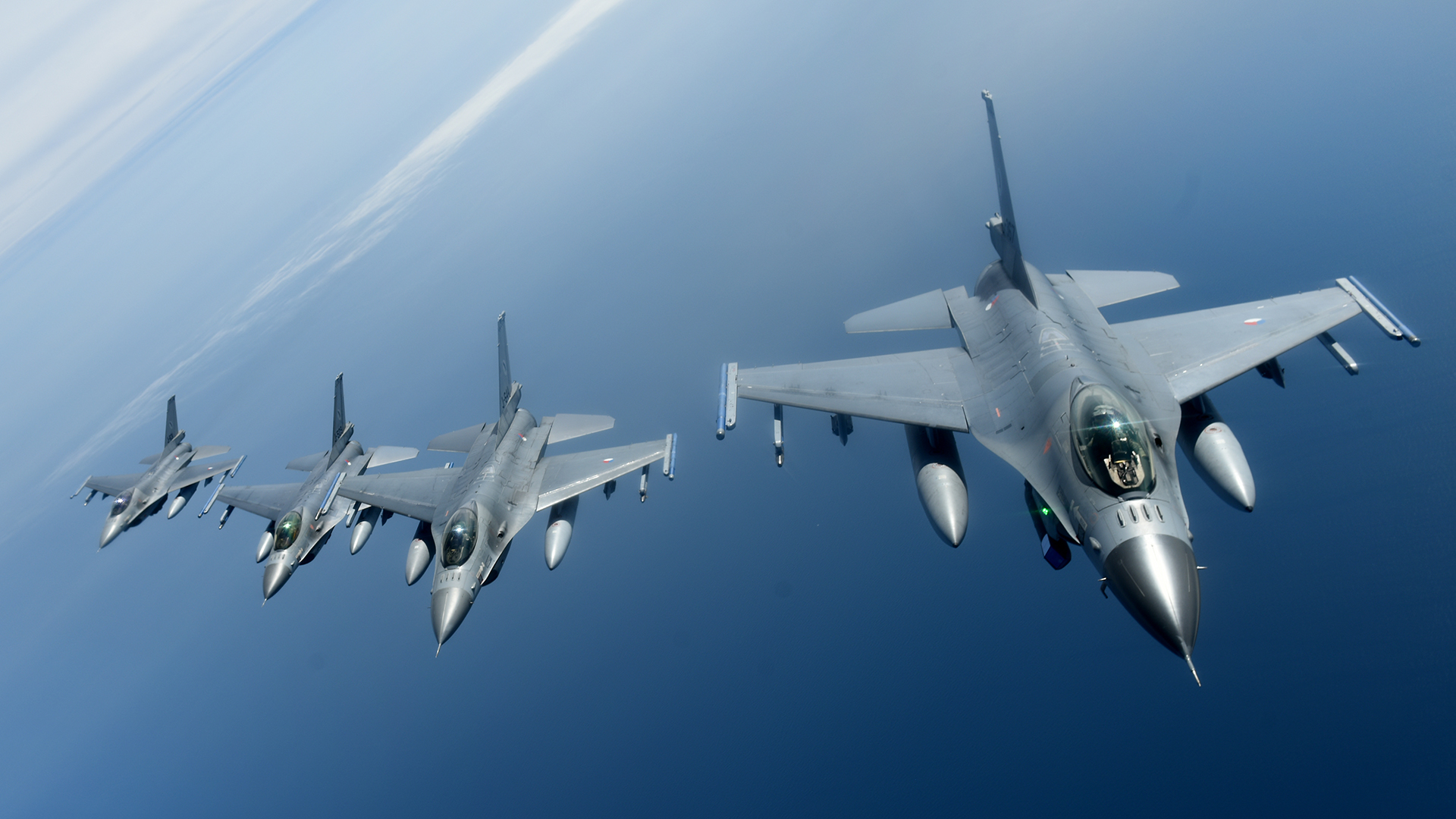The first of Ukraine’s long-awaited F-16 fighters have arrived in the country, according to reports and photographs. While there had been previous statements suggesting that the first of these fighters would arrive in Ukraine this summer, the program to transfer the jets, and train the crews to operate them, had faced consistent challenges. It’s therefore a remarkable milestone and one that will provide a significant morale boost to Ukraine — as well as kickstart a notable advance in capability, but one that will take some considerable time to fully mature.
Today saw Bloomberg report that the first F-16s were now in Ukraine, with the same account citing “people familiar with the matter” as saying that the deadline for this delivery was the end of this month. The same sources, speaking to Bloomberg under condition of anonymity, confirmed that the number of jets supplied so far to Ukraine is “small.”
Meanwhile, The Telegraph newspaper said it understands that the Ukrainian F-16s have only been used in an “air defense” capacity so far, although its source for this claim is unclear. If the Ukrainian F-16s have only been in the country a matter of days or even hours, flying combat missions at this stage would seem to be very rapid progress, although certainly not impossible.
At this stage, there has been no comment from the Ukrainian Ministry of Defense or from the Pentagon.
A photo that began circulating online today claims to show one of the jets flying over the western city of Lviv. A building in the photo has been geolocated to the city’s town hall, although we cannot say for sure that the photo is genuine and hasn’t been manipulated.
There has also been at least one other photo that claims to show an F-16 over Ukraine. It shows an apparently unmarked jet in flight, carrying drop tanks but otherwise seemingly unarmed. There are unconfirmed reports this photo was also taken in Lviv.
A video that appeared yesterday also claims to show an F-16 operating over Ukraine. While this can’t be confirmed at this point, today’s developments suggest that it’s at least a possibility.
To briefly recap the complicated saga of getting F-16s into Ukrainian skies, after months of campaigning in the wake of Russia’s full-scale invasion of Ukraine in February 2022, U.S. President Joe Biden finally relented in May 2023 and approved the transfer of these jets to Ukraine.
This turnaround came after pressure was applied by European NATO allies who offered their F-16s to Ukraine.
As it stands, Ukrainian F-16s are now being drawn from a multinational European consortium spearheaded by Denmark and the Netherlands.
At the latest count, around 85 F-16AM/BMs have now been committed to Ukraine. These comprise 24 from the Netherlands, 19 from Denmark, and 12 from Norway (with the same country providing 10 more that will be used for spare parts), while Belgium says it will supply 30. Greece has also since been suggested as a possible source of more of the fighters, of the F-16C/D Block 30 version.

As we have discussed before, the process of getting Ukrainian crews trained on F-16s has been one of the biggest hurdles in the whole effort.
Now that Ukrainian pilots and ground crews have completed training with their Western allies over the past months, there is the question of how long it will take to actually bring them into combat and then to do so on a regular basis for more meaningful effects. These issues will be compounded by the apparently relatively few Ukrainian pilots who have been trained on the F-16 so far. According to a report last week by the Washington Post, only six Ukrainian pilots have qualified to fly the F-16, reducing the number of sorties that could be flown each day.
This will also depend upon the kinds of weapons that have been integrated on the Ukrainian F-16s. At this stage, we don’t know for sure, but we have examined the various options in depth in the past.

The sources who spoke to Bloomberg said it was not clear whether the Ukrainian Air Force would be able to use the F-16s in combat “immediately,” or if further training would be required in country. At the very least, a degree of familiarization flying in the local region will be required before embarking on operational missions.
Ultimately, it’s hoped that the F-16s can help make an impression on the overwhelming numerical and technical superiority of Russian air power in the conflict, as well as Moscow’s relentless drone and missile strikes on critical infrastructure. But this is something that will take time and will require a much bigger force of F-16s than currently available in Ukraine, simply to ensure there are enough aircraft to maintain meaningful combat air patrols alone.
As Gen. James Hecker, head of U.S. Air Forces in Europe (USAFE), as well as Air Forces Africa (AFAFRICA) and NATO’s Allied Air Command, explained recently, the F-16 is “not going to be the golden BB or the golden bullet, that all of a sudden, you know, they have F-16s and now they’re going to go out and gain air superiority.” Hecker continued: “And it’s not just because it’s Ukraine, it’s just… the integrated air and missile defense systems that they’re going up against is [sic] that good. And we have a hard time with [stealthy] fifth-generation aircraft going against that.”

There is also the very real threat that Russia poses to the Ukrainian F-16s while they are on the ground. In recent weeks, a spate of ballistic missile strikes has targeted Ukrainian air bases and the Soviet-era equipment that makes up the vast majority of its combat fleet.
Moscow has already put a bounty on the Ukrainian F-16s, and the preservation of the precious fleet will be a primary concern for Kyiv. For this reason, it’s likely that the jets will be moved around different bases in the country, as well as operating from temporary airstrips, to make them harder to target. The Ukrainian Air Force has utilized similar tactics with its fleet of Soviet-era MiG-29 and Su-27 fighters, with generally good results.

Part of the effort to protect the F-16 fleet appears likely to involve only a certain number of the total Ukrainian fleet being in the country at any given time, even as the pilot and support cadre for the jets grows. Some of the jets will be used for training outside of Ukraine, while still more airframes will provide a strategic reserve that is kept at readiness in allied countries in Europe. In this way, jets exposed to combat can also be rotated out of Ukraine and can likely undergo heavier maintenance outside of the country.
Even once Ukraine is in possession of a larger fleet of the fighters, a similar policy will likely be retained, with certain sorties perhaps also originating from non-Ukrainian bases, with a major caveat. For example, it would seem feasible to launch the jets in an unarmed configuration from a base in another nearby country, land in Ukraine where they would be rapidly armed and refueled, before completing a mission, and then potentially fly back out to an air base outside Ukraine, even possibly landing again before doing so. This could keep the jets safe while also walking the tightrope of escalation that has so concerned Washington and some of its NATO allies.
Russia has repeatedly said it would strike bases outside of Ukraine if the F-16s fly combat missions from them. Russia has made similar threats, but the F-16 issue is a very sensitive one for obvious reasons.
While still unofficial, the first delivery of F-16s to Ukraine, if confirmed, is a very significant move. Necessarily, the small fleet will, at first, only have a limited ability to fight back against Russia. However, it signals an entirely new era for the Ukrainian Air Force, one in which Western-supplied equipment is, at long last, at the forefront.
Contact the author: thomas@thewarzone.com
